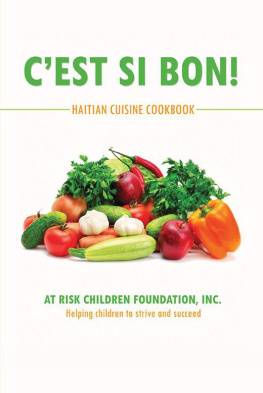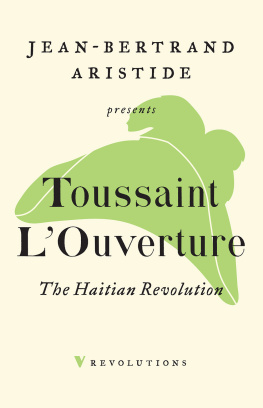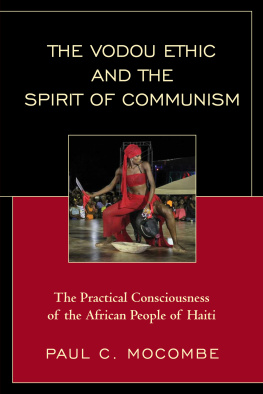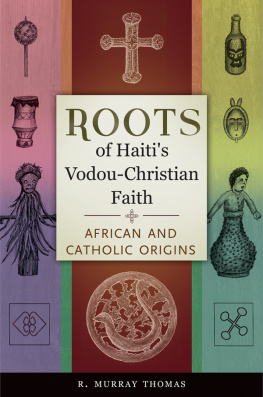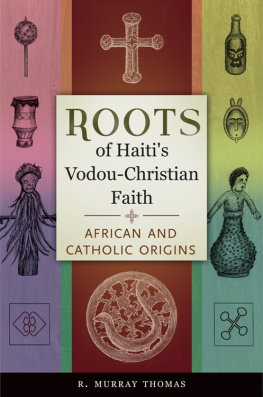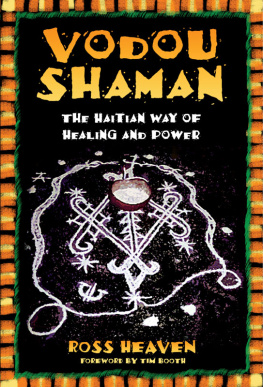About the Author
Mambo Chita Tann (Mambo T) is a priestess of Haitian Vodou and the head of La Sosyete Fs F Yo W (Strength Makes Them See Society), a Vodou society based in both Haiti and the Midwestern United States. She has been practicing Vodou for more than a decade and was initiated into the Vodou priesthood in Haiti as a mambo asogwe in 2001.
In addition to her work with Vodou, Mambo T serves as the founder and current spiritual head of the Kemetic Orthodox Faith, a modern form of the pre-Christian ancient Egyptian religion. She is also a professional Egyptologist.
Mambo Ts first full-length book was published in 1994, and she has authored a number of academic and mainstream articles, papers, and publications about ancient Egypt, Haitian Vodou, and other ancestral practices under her legal name, Tamara L. Siuda. She is a frequent speaker at academic and interfaith conferences and has been interviewed for various books, magazines, and television programs.
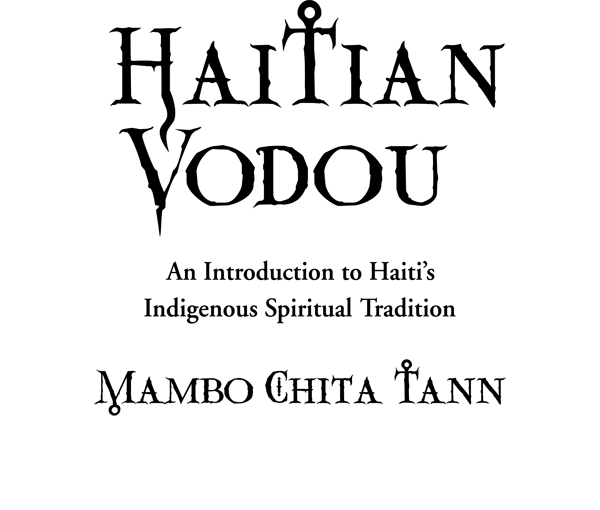
Llewellyn Publications
Woodbury, Minnesota
Copyright Information
Haitian Vodou: An Introduction to Haitis Indigenous Spiritual Tradition 2012 by Mambo Chita Tann.
All rights reserved. No part of this book may be used or reproduced in any matter whatsoever, including Internet usage, without written permission from Llewellyn Publications, except in the form of brief quotations embodied in critical articles and reviews.
As the purchaser of this e-book, you are granted the non-exclusive, non-transferable right to access and read the text of this e-book on screen. The text may not be otherwise reproduced, transmitted, downloaded, or recorded on any other storage device in any form or by any means.
Any unauthorized usage of the text without express written permission of the publisher is a violation of the authors copyright and is illegal and punishable by law.
First e-book edition 2012
E-book ISBN: 9780738731636
Book design by Bob Gaul
Cover art: Altar photo Allan Spiers, Purple background Rackermann/iStockphoto
Cover design by Adrienne Zimiga
Editing by Nicole Edman
Interior map and illustrations Llewellyn Art Department
Llewellyn Publications is an imprint of Llewellyn Worldwide Ltd.
Llewellyn Publications does not participate in, endorse, or have any authority or responsibility concerning private business arrangements between our authors and the public.
Any Internet references contained in this work are current at publication time, but the publisher cannot guarantee that a specific reference will continue or be maintained. Please refer to the publishers website for links to current author websites.
Llewellyn Publications
Llewellyn Worldwide Ltd.
2143 Wooddale Drive
Woodbury, MN 55125
www.llewellyn.com
Manufactured in the United States of America
This book is dedicated with love to my godmother Daille
and my maman-hounyo Sonia, resting in Ginen,
and the people of Haiti, who welcomed
me into their lives and culture, and took me
in as one of their own.
Contents
Part One: What Is Haitian Vodou?
: Zo Li Mache : How Haitiand Haitian VodouCame to Be
: Apr Bondye : Basic Principles and Ethics of Haitian Vodou
: Haitian Vodou Confusions and Controversies
Part Two: Lezanj: Meet the
Twenty-One Nations of the Lwa
: The Rada Lwa
: The Petro (Petwo) Lwa
: The Gede Lwa
: Other Lwa
Part Three: Seremoni: Haitian Vodou
Ceremonies and Rites of Passage
: Svi Lwa : Serving the Lwa
: Wanga : Haitian Vodou Magic
: Sosyete : The Vodou Family, Initiation, and Practice
: First Steps in Haitian Vodou
Appendices
: Glossary
: Timeline of Haitian History
: Priy Katolik (Catholic Prayers in English and French)
: Lwa Correspondences
Acknowledgments
Ap r Bondye (after God), I thank Papa Legba Avadra for showing me why I should write this book and for opening all the doors for me to get it published. To my ancestors and spiritsAfrican, European, and HaudenosauneeI say thank you, I touch the ground, and I pour water for you.
I owe a great debt to many people for the reality of this book. First, I need to thank the Vodouisants of Jacmel and Cyvadier, Haiti, who welcomed me to their country when I traveled there for the first time in July 2001 for my first initiation into Haitian Vodou. I am deeply grateful for everything I learned about myself and about the Lwa from the various people I got to know or visited or shared ceremonies with during my trips to Jacmel. To all of you, living and dead, I say thank you, I touch the ground, and I pour water for you.
To my family in central Haiti, I owe an even deeper debt of gratitude. Mambo Fifi Ya Sezi, the late maman-hounyo Mambo Sonia (Bondye bene li) , Houngan Patrick, Houngan Franois, and all the other people of Sosyete Sipote Ki Di and Sosyete La Fracheur. La Fracheur Belle Fleur Guinea in Port-Au-Prince permitted my initiation into their lineage and made it a beautiful experience that I will always hold in my heart. I am forever grateful for my godfather, Houngan Benics, and for my godmother, the late Mambo Daille (Bondye bene li). To all of you, living and dead, I say thank you, I touch the ground, and I pour water for you.
Most of all, I must acknowledge and thank Papa Loko Atisou and my initiatory mother, Il Fok Sa Yabof Bon Mambo, Marie Carmel Charles, daughter of Mambo Jacqueline Anne-Marie Lubin, daughter of Kitonmin Bon Mambo Felicia Louis-Romain, who brought me out of the water and into the light.
Additional thanks are due to my editor Elysia Gallo at Llewellyn, who showed up from nowhere at a conference presentation I was doing and told me she believed we could publish a book respectful to Haitians, yet still answering the questions of a wider audience. Editor Nicole Edman put up with my sudden loss of serial commas at production time. Adrienne Zimiga, my Llewellyn artist (I have my own artist? How cool is that!) must be commended for her excellent taste in NDN star quilts and a mean veve , in addition to her excellent illustration work. Thank you for everything.
I need to thank the test subjects: my friends and family who read drafts, asked questions, and gave support and advice. In addition to my sosyete members who helped in that process, Cristina and Craig offered copy-edits when my eyes were crossing, Leah and Andy provided their shoulders for me to lean (and cry) on, and J sent me poetry and kept me smiling. I couldnt have done this without you, and I love you all.
Love and thanks for my kids in Sosyete Fs F Yo W: my hounsi Garth, Ti-Marie, Eujenia, Mon, Scott, Salvador (oopsI mean Matt!), and Geoffrey; and my godson, Russell, for keeping me on track while I tried to work two jobs and get this book done at the same time. Im also grateful for the contributions of my other sosyete members and friends who arent initiates, who are simply curious about Haitian Vodou, or who intend to initiate in the future. Their questions and interest fueled the basis of the beginners part of this book, and I kept them at the front of my mind as I wrote.
Mesi anpil pou tout mwen sonje, tout mwen pa sonje.
To all those I remember and any I havent remembered, many thanks.
Chita Tann Bon Mambo (Tamara L. Siuda)
14 November, 2011
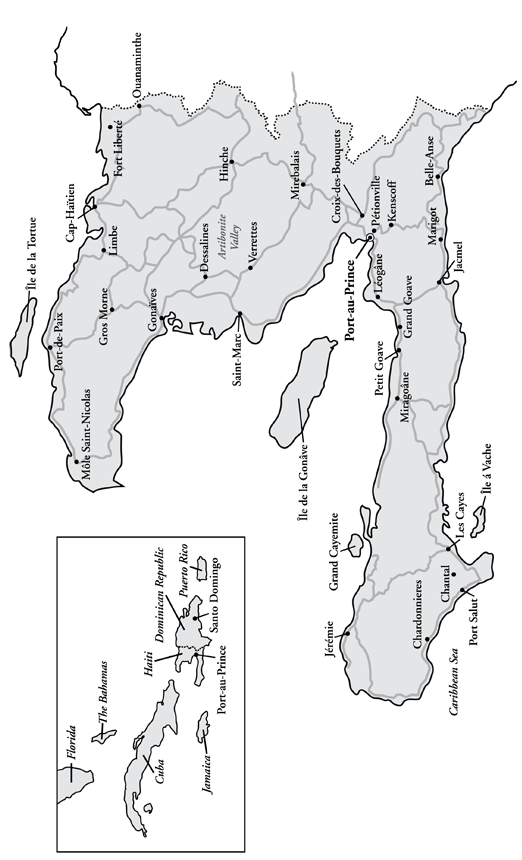
Introduction
I remember my godmother, Mambo Daille, as I saw her on my last trip to Haiti, almost exactly four years before the earthquake struck that took her life. When I came out of the djevo (the sanctuary where candidates for the Haitian Vodou initiation ceremonies called Kanzo are ritually secluded) on Sunday morning to attend Mass and receive my name as a priestess in the Vodou lineage, she was standing right there, shining in her brand-new clothes, tiny next to my very-tall godfather. I remember she spent a whole lot of time fussing over whether or not she thought Mama Sonia had done a good enough job of making me look good for my baptism, and she kept straightening my hat. She was impressed with the scarab beads that had been worked into the final few inches of my klye (a long beaded necklace worn by Kanzo initiates) in a show of respect to the ancient Egyptian gods and spirits of my Kemetic Orthodox faith. The photos that Mambo Fifi took didnt turn out very well, but Daille looked so happy and so proud, even though my Kreyl was lousy, my French wasnt much better, and we could only communicate in broken sentences. She held on to me during the whole ceremony and both of us started crying when she told the priest what my name was: Chita Tann , a name that has been passed down more than once in our lineage and a name I still believe I have a long way to go before I live up to it.
Next page

